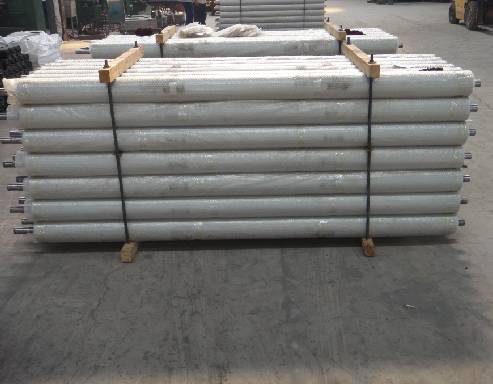 Afrikaans
Afrikaans  Albanian
Albanian  Amharic
Amharic  Arabic
Arabic  Armenian
Armenian  Azerbaijani
Azerbaijani  Basque
Basque  Belarusian
Belarusian  Bengali
Bengali  Bosnian
Bosnian  Bulgarian
Bulgarian  Catalan
Catalan  Cebuano
Cebuano  Corsican
Corsican  Croatian
Croatian  Czech
Czech  Danish
Danish  Dutch
Dutch  English
English  Esperanto
Esperanto  Estonian
Estonian  Finnish
Finnish  French
French  Frisian
Frisian  Galician
Galician  Georgian
Georgian  German
German  Greek
Greek  Gujarati
Gujarati  Haitian Creole
Haitian Creole  hausa
hausa  hawaiian
hawaiian  Hebrew
Hebrew  Hindi
Hindi  Miao
Miao  Hungarian
Hungarian  Icelandic
Icelandic  igbo
igbo  Indonesian
Indonesian  irish
irish  Italian
Italian  Japanese
Japanese  Javanese
Javanese  Kannada
Kannada  kazakh
kazakh  Khmer
Khmer  Rwandese
Rwandese  Korean
Korean  Kurdish
Kurdish  Kyrgyz
Kyrgyz  Lao
Lao  Latin
Latin  Latvian
Latvian  Lithuanian
Lithuanian  Luxembourgish
Luxembourgish  Macedonian
Macedonian  Malgashi
Malgashi  Malay
Malay  Malayalam
Malayalam  Maltese
Maltese  Maori
Maori  Marathi
Marathi  Mongolian
Mongolian  Myanmar
Myanmar  Nepali
Nepali  Norwegian
Norwegian  Norwegian
Norwegian  Occitan
Occitan  Pashto
Pashto  Persian
Persian  Polish
Polish  Portuguese
Portuguese  Punjabi
Punjabi  Romanian
Romanian  Russian
Russian  Samoan
Samoan  Scottish Gaelic
Scottish Gaelic  Serbian
Serbian  Sesotho
Sesotho  Shona
Shona  Sindhi
Sindhi  Sinhala
Sinhala  Slovak
Slovak  Slovenian
Slovenian  Somali
Somali  Spanish
Spanish  Sundanese
Sundanese  Swahili
Swahili  Swedish
Swedish  Tagalog
Tagalog  Tajik
Tajik  Tamil
Tamil  Tatar
Tatar  Telugu
Telugu  Thai
Thai  Turkish
Turkish  Turkmen
Turkmen  Ukrainian
Ukrainian  Urdu
Urdu  Uighur
Uighur  Uzbek
Uzbek  Vietnamese
Vietnamese  Welsh
Welsh  Bantu
Bantu  Yiddish
Yiddish  Yoruba
Yoruba  Zulu
Zulu belt cleaner
Understanding the Importance of Belt Cleaners in Material Handling Systems
In various industries, especially in manufacturing and mining, the transportation of materials is often facilitated by conveyor belts. While conveyor systems are a crucial part of operations, they also require consistent maintenance to ensure efficiency and safety. One of the integral components of maintaining a conveyor system is the belt cleaner. This article explores the significance of belt cleaners and their role in enhancing the performance of conveyor belts.
Belt cleaners are specialized devices designed to remove any debris, residue, or material that accumulates on the surface of conveyor belts during operation. These cleaners are crucial for several reasons. Firstly, the accumulation of material on the belt can lead to significant maintenance issues. When material clogs the conveyor, it can cause the belt to slip, leading to decreased performance and potential breakdowns. This not only affects productivity but can also result in costly repairs and downtime.
Moreover, clean belts reduce the risk of material spillage. Uncontrolled spillage can create hazardous working conditions, especially in industries that handle bulk materials. It poses a safety risk to workers, as slippery surfaces can lead to accidents and injuries. By utilizing belt cleaners, companies can maintain a cleaner work environment and ensure the safety of their employees.
Another critical function of belt cleaners is their contribution to the overall efficiency of the conveyor system. When belts are clean, they can operate more smoothly and transport materials more effectively. This efficiency is particularly important in high-volume operations where even minor disruptions can lead to significant losses in productivity. Ensuring the belt remains clean allows for a more consistent workflow and optimizes the entire material handling process.
belt cleaner

Belt cleaners come in various designs and styles, tailored for different types of materials and conveyor systems. Some of the common types include primary cleaners, secondary cleaners, and pre-cleaners. Primary cleaners are usually mounted directly on the discharge point of the conveyor, where they work to remove the bulk of the material. Secondary cleaners, often installed a few inches down the belt, serve as a backup to ensure any remaining residue is scrubbed off. Pre-cleaners are used to remove larger particles before they can reach the primary cleaner.
The choice of the right belt cleaner is critical for maximizing its effectiveness. Factors such as the type of material being transported, the belt speed, and the environmental conditions all play a role in determining the best cleaner for a specific application. For instance, in a mining operation where sticky materials like clay are prevalent, a more robust belt cleaner may be required compared to a company handling dry, granular materials.
Regular maintenance and inspection of belt cleaners also cannot be overlooked. Companies should establish a routine to check the condition of their belt cleaning systems and replace worn parts as needed. This proactive approach not only extends the life of the equipment but also ensures that the conveyor belts operate at peak performance.
In conclusion, belt cleaners are an essential component of conveyor systems in various industries. They play a vital role in maintaining efficiency, ensuring safety, and preventing costly downtime. By investing in quality belt cleaners and implementing a consistent maintenance routine, companies can enhance the productivity of their material handling operations and create a safer work environment for their employees. As industries evolve and the demand for efficient material handling solutions continues to grow, the importance of reliable belt cleaning systems will only increase.
-
Revolutionizing Conveyor Reliability with Advanced Rubber Lagging PulleysNewsJul.22,2025
-
Powering Precision and Durability with Expert Manufacturers of Conveyor ComponentsNewsJul.22,2025
-
Optimizing Conveyor Systems with Advanced Conveyor AccessoriesNewsJul.22,2025
-
Maximize Conveyor Efficiency with Quality Conveyor Idler PulleysNewsJul.22,2025
-
Future-Proof Your Conveyor System with High-Performance Polyurethane RollerNewsJul.22,2025
-
Driving Efficiency Forward with Quality Idlers and RollersNewsJul.22,2025





























